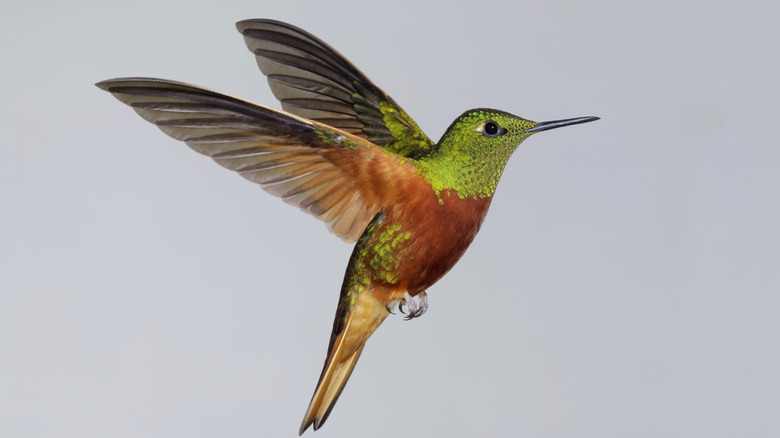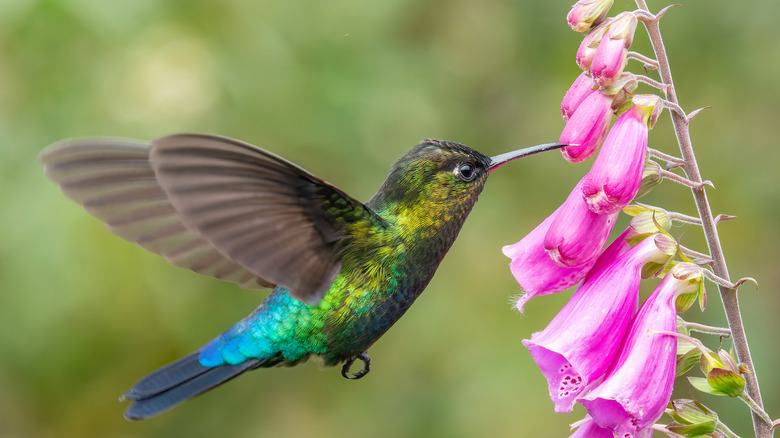Tips For Preparing Your Yard For Spring Hummingbirds
Hummingbirds are migratory birds that spend their winters in warm regions. In spring they fly to more temperate climates, and in autumn they return to their winter homes. In various parts of the United States, several hummingbird species take up residence from early spring through autumn. The timing of their arrival corresponds directly to how far north a region is, as they usually wait until there are plants in bloom that provide them with food. There are a few tips for preparing your yard for the spring arrival of migrating hummingbirds.
Offering support to hummingbirds in your garden is most important during the active migratory season. In spring, they need plenty of food for energy after they have traveled a long way. The two main ways to provide nutritional support to hummingbirds are through nectar-rich plants and hummingbird feeders. Plants are the preferred approach since this is their natural food. However, feeders can be a good supplemental food source, and having feeders ready may attract hummingbirds sooner if pollinator plants are not yet fully in bloom.
Hummingbird feeders come in a variety of models and styles. Many hummingbird enthusiasts agree that the saucer-shaped feeders are best for your feathered friends. Whichever style of feeder you have, it's important to keep it clean to help prevent the spread of disease or bacteria to hummingbirds. You can buy commercially prepared hummingbird food for the feeders, which comes in ready-to-use liquid, concentrate that needs to be diluted, or powder that needs to be mixed. If you prefer the DIY route, homemade hummingbird nectar is surprisingly easy to make.
Best plants for spring hummingbird arrival
Flower nectar is an important source of food for hummingbirds, alongside insects and spiders. The liquid form of this food makes it easy for them to digest quickly, which is useful for their fast metabolisms. The best plants for a hummingbird-friendly garden are native plants because they are richer in nectar than exotic species. Hummingbird-friendly plants native to North America include bee balm, hummingbird mint, and foxglove beardtongue. The National Audubon Society provides a useful directory and guide to nectar-rich native plants according to your region. Having a variety of spring-blooming flowers is a great way to make your garden ready for hummingbirds completing their spring migration.
Hummingbirds are known to be attracted to tubular flowers, especially in shades of red, deep pink, and orange. Native red and orange flowers they enjoy include trumpet honeysuckle, butterfly weed, and cardinal flower. Columbines are another popular early spring blooming perennial that attracts hummingbirds, and they flourish in partial shade. Other spring-blooming flowers that provide an early-season source of nectar for hummingbirds include bleeding hearts and the blue and pink blooms of shade-loving lungwort.
You can also plant blooming shrubs to attract hummingbirds. The pint-sized avians love azaleas — try a red variety like 'Red Bird' or the stunning orange-flowered 'Gibraltar.' They also enjoy the luscious spring blooms of flowering quince. The common quince produces deep pink flowers that attract hummingbirds, or try the enchanting orange flowers of the 'Cameo' or 'Double Take Peach' varieties.

